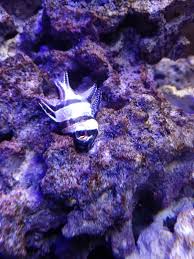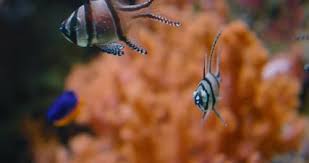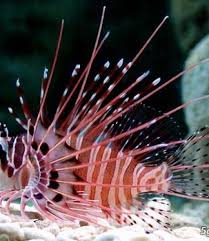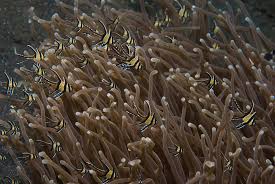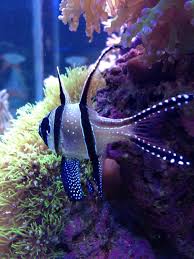In Chinese culture, the dragon (龙 – Lóng) has long been associated with imperial power, divine authority, and cosmic harmony. It symbolizes the mandate of heaven (天命 – Tiānmìng), the sacred right of emperors to rule. Throughout history, dragons played a central role in royal ceremonies, grand processions, and festivals dedicated to honoring the Chinese emperor, reinforcing the ruler’s connection to the divine and the prosperity of the empire.
This article explores the influence of dragons in Chinese royal festivals, examining their symbolic meaning, role in imperial rituals, and lasting impact on Chinese cultural traditions.
1. The Dragon as a Symbol of Imperial Power
1.1 The Dragon as the Emperor’s Emblem
In Chinese tradition, the emperor was often referred to as the “Son of Heaven” (天子 – Tiānzǐ) and was believed to be a living embodiment of the dragon. This association can be seen in:
- The Imperial Dragon Robe (龙袍 – Lóngpáo) – Only the emperor could wear a golden robe embroidered with five-clawed dragons, a symbol of his absolute authority.
- The Forbidden City’s Dragon Motifs – Thousands of dragon carvings, murals, and sculptures decorated the imperial palace to signify the emperor’s divine rule.
- Dragon Thrones and Seals – The emperor’s throne was called the “Dragon Throne”, and the imperial seal often bore the image of a dragon, reinforcing the ruler’s celestial power.
By using dragons in these ways, emperors established their position as heavenly-appointed rulers, ensuring their legitimacy during royal festivals and ceremonies.
1.2 The Mandate of Heaven and the Dragon’s Role
The Mandate of Heaven was an important philosophical concept in Chinese governance, stating that an emperor ruled with divine approval. However, this mandate could be lost if the ruler became corrupt or if natural disasters struck the land.
- Dragons represented the heavens’ favor – A strong and prosperous dynasty was believed to be under the protection of the dragon.
- Dragon omens were interpreted as signs – Comets, eclipses, or unusual dragon-shaped clouds were seen as signals of either divine blessing or impending disaster for the ruling dynasty.
- Imperial rituals sought to maintain harmony – Many royal festivals included dragon-themed ceremonies to ensure continued celestial favor and national stability.
This belief strengthened the role of dragons in imperial ceremonies, where they acted as protectors of the emperor’s divine right to rule.
2. Dragons in Major Royal Festivals and Ceremonies
2.1 The Dragon’s Role in the Chinese New Year Festival at the Imperial Court
Chinese New Year was the most important festival in imperial China, celebrated with grand rituals inside the Forbidden City. Dragons played a crucial role in this event, representing prosperity, renewal, and the emperor’s divine rule.
- The Emperor’s Offerings to the Heavens – The emperor performed a sacred ritual at the Temple of Heaven, praying for a prosperous year ahead. Dragon symbols were prominently displayed to invoke blessings.
- Dragon Dances in the Imperial Procession – Performers dressed as golden dragons paraded through the Forbidden City, symbolizing the emperor’s strength and connection to celestial forces.
- Dragon-Themed Banquets – Special dishes like dragon-shaped dumplings and golden dragon cakes were served to the royal family, signifying luck and power.
Through these customs, the dragon reinforced its role as a guardian of the empire and a bringer of good fortune.
2.2 The Dragon and the Winter Solstice Festival (冬至 – Dōngzhì) at the Royal Court
The Winter Solstice Festival was an essential event where the emperor performed rituals to balance the cosmic forces of yin and yang. Dragons were key symbols in these ceremonies, representing the return of light and renewal of imperial strength.
- The Emperor’s Procession to the Temple of Heaven – The emperor, dressed in a golden dragon robe, led a solemn ceremony to ensure harmony between heaven, earth, and the imperial throne.
- Dragon-Inspired Imperial Decorations – Dragon banners, golden dragon lanterns, and paintings of dragons emerging from clouds adorned the palace to symbolize renewal and strength.
- The Recitation of the Dragon Sutras – Buddhist monks and Taoist priests chanted dragon-related prayers, asking for the emperor’s long life and continued rule.
This festival emphasized the dragon’s role in maintaining cosmic balance and the emperor’s duty to uphold this order.
2.3 The Dragon Boat Festival and Its Imperial Variations
The Dragon Boat Festival (端午节 – Duānwǔ Jié) is widely known today as a folk celebration honoring the poet Qu Yuan, but during imperial times, it also had royal significance.
- The Emperor’s Ceremonial Dragon Boat Ride – Some emperors participated in symbolic dragon boat processions, demonstrating their control over nature and destiny.
- Imperial Blessings to the Yellow River Dragon King – The court performed rituals honoring the Dragon King of the Yellow River, praying for abundant harvests and national prosperity.
- Royal Feasts with Dragon-Themed Delicacies – The emperor and his court enjoyed dragon-shaped rice dumplings (粽子 – Zòngzi), reinforcing the imperial connection to dragon symbolism.
These celebrations reinforced the dragon’s role as a guardian of the empire’s rivers and natural resources, ensuring prosperity.
3. Dragon-Inspired Rituals in Emperor’s Coronation Ceremonies
A new emperor’s coronation (登基大典 – Dēngjī Dàdiǎn) was one of the most significant royal ceremonies, where dragons played a central role.
3.1 The Sacred Dragon Throne Ritual
- The emperor ascended the Dragon Throne, signifying his acceptance of the Mandate of Heaven.
- A golden dragon flag was raised to declare his divine authority.
- Priests conducted dragon-themed invocations, praying for the new ruler’s success.
3.2 The Dragon Procession and Blessings from Elders
- Massive dragon banners and sculptures were carried through the imperial city.
- Senior officials and royal elders offered dragon-shaped jade scepters, symbols of wisdom and governance.
- The emperor rode in a golden dragon chariot, displaying his celestial power to the people.
Through these rituals, the dragon affirmed its role as a protector and divine witness to the emperor’s rule.
4. The Lasting Influence of Dragons in Modern Royal Celebrations
Although China no longer has emperors, the imperial traditions of dragon symbolism continue in modern festivals:
- Dragon Dances in National Celebrations – Events like the National Day parade in China feature dragon dances, symbolizing strength and unity.
- Temple of Heaven Ceremonies – Tourists and cultural historians still visit the Temple of Heaven, where ancient dragon rituals were performed.
- Dragon Symbolism in Chinese Leadership – Even today, political and cultural leaders use dragon imagery to symbolize wisdom, strength, and prosperity.
The dragon remains a timeless symbol of power, continuing to inspire Chinese traditions, celebrations, and national identity.
Conclusion: The Dragon’s Eternal Presence in Royal Festivals
The dragon’s presence in royal festivals throughout Chinese history highlights its role as a divine protector, symbol of power, and harbinger of prosperity. From grand imperial ceremonies to seasonal festivals honoring the emperor, dragons played an essential part in shaping China’s cultural heritage.
Even in modern times, the spirit of the dragon lives on, reminding people of China’s rich traditions, historical strength, and enduring connection to celestial forces. Whether in imperial courts or modern celebrations, the legacy of the dragon remains unshaken, soaring through the heart of Chinese culture.






